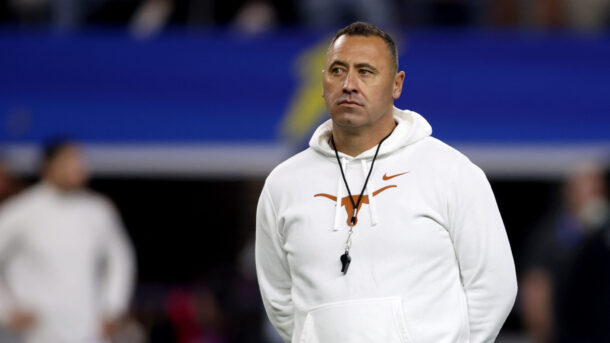Ad Disclosure

Film study: How Georgia’s defensive front dominated Tennessee
By Ian Boyd
Published:
The offensive line is supposed to be the heart of Butch Jones’ Tennessee program, but that unit was just thoroughly dominated by a superior Georgia Bulldogs defensive line on Saturday. It was a perfect storm given Tennessee’s struggles on offense this season and Georgia’s increasingly impressive defensive performances. After choking out the Notre Dame and Mississippi State offenses, Georgia made the Volunteers look like chew toys in a 41-0 shutout victory in Knoxville.
The raw numbers from the game are shocking. Tennessee ran 52 plays that garnered 142 total yards, 2.7 yards per play. It was difficult for the Vols to generate many first downs and indeed they secured only seven on the day — two from Bulldogs penalties.
Tennessee faced a lot of third downs and went 1-for-12 there and 0-1 on fourth downs. The Vols also managed to turn the ball over four times despite their limited number of snaps. It was a complete shellacking and it primarily occurred up front in the battle of the trenches.
Shutting down the Vols
Tennessee has an offense designed to establish the running game first, then create some opportunities in the passing game against defensive calls designed to load the box, when the situations yield easier throws and man coverage. This season running back John Kelly is the heart and soul of the entire unit and neither their rushing nor passing attack is particularly good if he’s not prominently involved.
The Bulldogs gave up 47 receiving yards on four catches to him, thanks mostly to a single 44-yard reception that ended in a fumble.
http://www.giphy.com/gifs/3o7aCWgVter9oAjAcw
They got him matched up on Lorenzo Carter in coverage here on an angle route of the sort Christian McCaffrey used to dominate with at Stanford. The Vols failed to get him the ball in space again in this contest.
On the ground, the Vol back managed only 44 yards on 16 carries as Kelly’s offensive line struggled to make any headway. Tennessee’s best results in the run game this year tend to come from zone blocking and the Vols were thwarted by Georgia’s three-down fronts on first down after first down.
http://www.giphy.com/gifs/l378waviYqQp66K9a
Inside zone runs work best when the offensive line can execute double teams, drive defensive linemen downfield, then release a guard or tackle to a linebacker. On this example the Georgia linemen get their hooks into the chests of the center and right tackle and the double teams don’t really move them off the line before releasing the right and left guard to try and connect on linebackers who have room to scrape and evade them.
Georgia linebacker Natrez Patrick defends two gaps on this play, first rocking back to follow the tight end before following the ball back to the boundary to make the stop for a gain of only 1 yard. It’s hard to account for a player like that if the O-line can’t force the issue against the first line of defense.
A standard drive against Georgia’s front
The game could be almost entirely summarized with a journey through the Volunteers’ third possession on offense.
http://www.giphy.com/gifs/3ohhwiItUQdvteh4Ji
Tennessee got in its preferred 11 personnel set, with the TE just off the line of scrimmage, and ran an inside zone play for Kelly. The Dawgs dropped nickelback Aaron Davis to the edge to help contain the ball and to create a numbers advantage to let the linebackers flow whichever direction the unattached TE inserted himself. These were some of the better blocks that Tennessee got on the Georgia DL but Tennessee’s “plus one” advantage resulted in a linebacker meeting Kelly in the hole before he gained more than a yard.
On second down Tennessee had a choice whether to try to punish Georgia for playing numbers in the box by throwing the ball, try to run over Davis on the edge, or even out the numbers with a second tight end. They choose the last option because Butch Jones’ general preference seems to be to win mano y mano up front or not at all.
http://www.giphy.com/gifs/26n79GxT7nsdbLCGA
The defensive end pushed the right tackle into the backfield. Nose tackle John Atkins evaded the double team and squeezed the play side gap closed by shoving the center’s body in that direction before slipping the block and making the tackle himself. Tennessee released guards up to the linebackers and used a crackback block to take out the safety, who dropped down, but the Vols can’t win the line of scrimmage.
This set up third and 7 and invited Georgia’s star pass rusher Lorenzo Carter into the formula.
http://www.giphy.com/gifs/xT9IgszotRAzzdazaE
Georgia lined up Carter as a “spinner” here, an inside linebacker who’s blitzing an interior gap all the way. They also used a stunt to bring him from one B-gap to the other after the snap as he hunted a lane that the rest of the pass rushers opened.
Georgia had eight tackles for loss and three sacks on Saturday.
He did not get home here and had no sacks on the day, but Carter’s late arrival hurried Quinten Dormady into misfiring what otherwise could have been a big throw down the sideline.
Tennessee couldn’t block Georgia’s defensive line, couldn’t scheme ways to win the line of scrimmage and clear out the linebackers and defensive backs that the Dawgs would crowd in on obvious run downs, and couldn’t protect Dormady in obvious passing situations. Tennessee has problems on offense, but the Bulldogs are starting to build a resume to make you ask, “who can get after these guys?”
Ian Boyd is a college football analyst who studies the strategies and tactics across the game. Follow or contact Ian on twitter @Ian_A_Boyd.




